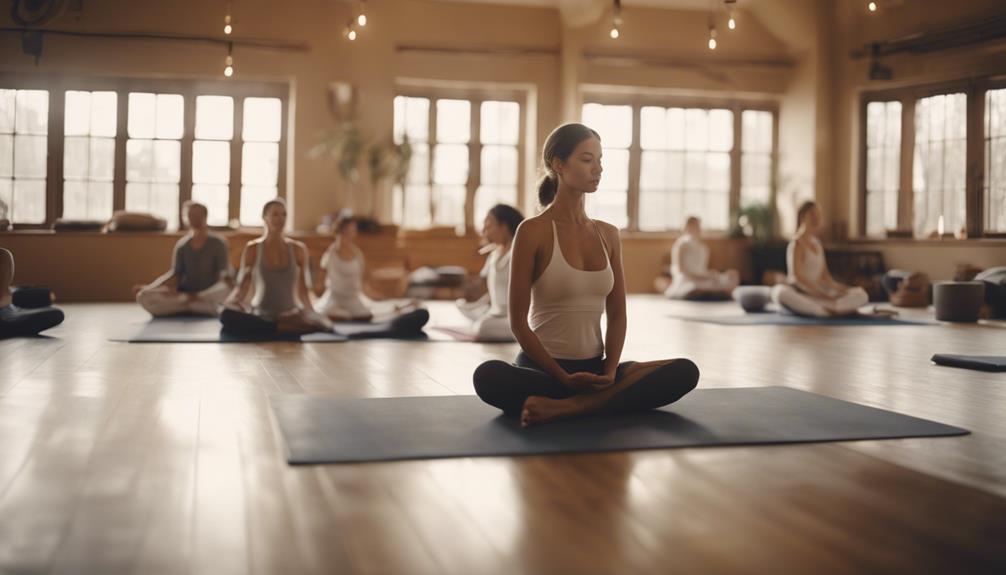What Yoga Poses To Avoid During Pregnancy

Pregnancy is a beautiful journey that brings about significant physical and emotional changes. Many expectant mothers turn to yoga as a way to maintain fitness, relieve stress, and prepare for childbirth. However, not all yoga poses are safe during pregnancy. Understanding what yoga poses to avoid during pregnancy is crucial for the safety and well-being of both the mother and the baby. In this article, we will explore the poses that should be skipped, alternative options, and the benefits of practicing safe yoga during pregnancy.
Understanding the Importance of Safe Yoga Practices
Yoga can be incredibly beneficial during pregnancy, helping with flexibility, strength, and relaxation. However, certain poses can put undue strain on the body or even pose risks to the developing fetus. Understanding what yoga poses to avoid during pregnancy is essential to ensure a safe practice. This is particularly important in the first trimester when the risk of miscarriage is higher, as well as in later trimesters when balance and flexibility can be compromised. Consulting with a healthcare provider or a certified prenatal yoga instructor is highly recommended for personalized advice.
Inversions: Why They Should Be Avoided
Inversions, such as headstands or shoulder stands, are poses that can cause the mother to lose balance and increase the risk of falling. These poses can also disrupt the flow of blood to the uterus, which is critical for the baby’s development. During pregnancy, the body undergoes significant changes, including a shift in the center of gravity. Therefore, it’s best to avoid inversions and opt for gentler poses that promote stability and comfort. If you are an experienced yogi, consider modifying your practice to include more grounding postures.
Deep Twists: The Risks for Expecting Mothers
Deep twisting poses, like Marichyasana or Twisted Chair Pose, can compress the abdomen and restrict blood flow to the uterus. This is particularly concerning in the later stages of pregnancy when the baby is growing rapidly. While gentle twists can be beneficial in moderation, deep twists should be avoided to minimize risk. Instead, focus on gentle side stretches or seated poses that allow for expansion without putting pressure on the belly. Listening to your body is key during this time.
Strong Backbends: Safety Considerations
Backbends such as Wheel Pose or Camel Pose may feel invigorating but can place excessive strain on the lower back and abdomen, which is already under pressure from the growing baby. Strong backbends can also lead to overstretching, which is particularly risky as the body releases relaxin during pregnancy. This hormone loosens ligaments and joints, increasing the likelihood of injury. Opt for gentle backbends like Cat-Cow or Sphinx Pose that provide a stretch without pushing the limits of your body.
Balancing Poses: Why Caution is Key
Balancing poses like Tree Pose or Warrior III can be challenging during pregnancy due to changes in body weight, size, and center of gravity. Falling can result in injury to both the mother and baby. When considering what yoga poses to avoid during pregnancy, balancing poses should be high on the list. If you want to work on your balance, consider holding onto a wall or chair for support. Additionally, you can practice seated or supported variations of these poses to maintain stability.
Abdominal Strengthening Exercises: An Unnecessary Risk
Many traditional yoga practices include abdominal strengthening exercises, such as Boat Pose or Plank variations. However, during pregnancy, it’s essential to avoid poses that put direct pressure on the abdomen. These poses can lead to diastasis recti, a condition where the abdominal muscles separate, and can cause discomfort or complications during pregnancy and postpartum. Instead, focus on gentle core engagement exercises that support the pelvic floor and lower back, such as modified Cat-Cow or seated exercises.
Prone Poses: Safety First
Prone poses, like Cobra or Bow Pose, involve lying flat on the stomach, which is not advisable as the pregnancy progresses. These poses can compress the abdomen and limit blood flow to the fetus. As the bump grows, lying on the stomach can become increasingly uncomfortable and even unsafe. Instead, consider poses that allow you to be on your side or in a seated position, such as Side-Lying Leg Lifts or seated forward bends, which provide a safe and comfortable alternative.
Listening to Your Body: The Best Advice
Above all, the most important guideline for practicing yoga during pregnancy is to listen to your body. Every pregnancy is unique, and what works for one person may not work for another. If a pose feels uncomfortable, painful, or causes any anxiety, it’s best to avoid it. Consider joining a prenatal yoga class where instructors are trained to provide modifications and safety tips for pregnant women. Practicing yoga should be a joyful experience that enhances your pregnancy journey, so prioritize poses that make you feel good and supported.
Conclusion: Embrace Safe Yoga Practices for a Healthy Pregnancy
Yoga during pregnancy can offer numerous benefits, from improved flexibility to stress relief. However, knowing what yoga poses to avoid during pregnancy is crucial for maintaining safety and well-being. By steering clear of inversions, deep twists, strong backbends, balancing poses, abdominal exercises, prone poses, and listening to your body’s signals, you can create a safe and beneficial yoga practice. Remember, it’s always best to consult with a healthcare provider or a certified prenatal yoga instructor for personalized guidance. Embrace this beautiful journey, and let yoga support your path to motherhood with safety and ease.Corepower Yoga Near MeIs Yoga Good For Strength TrainingWhat Is Prenatal Yoga